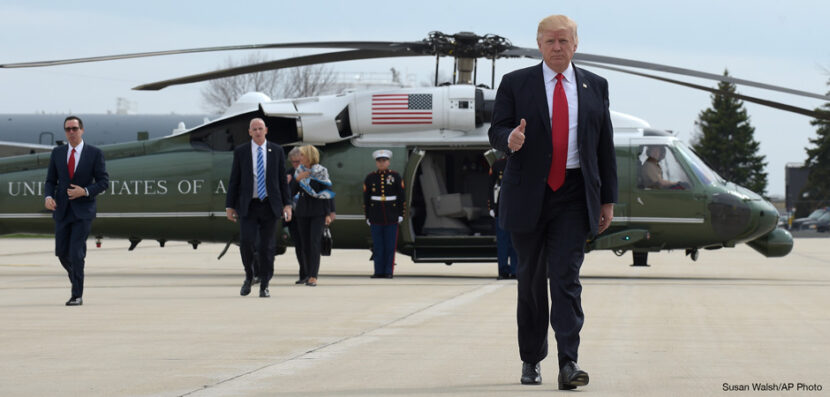
Is President Trump a . . . Centrist?
President Trump’s removal of his top adviser, Stephen Bannon, from the National Security Council earlier this month, and his abandonment of several of his campaign promises, has many political analysts speculating that Trump may actually be becoming more “centrist”–that is, someone who identifies as neither extremely liberal nor extremely conservative. But is this an accurate assessment? Let’s take a closer look.
Executive Orders
President Trump has not followed through on many of his controversial executive orders. But this is not because he has changed his mind or reversed his policies; rather, it’s because many of his legislative attempts have failed. In fact, fewer than half of Trump’s 39 executive orders so far have changed policy in any significant way. His immigration bans have been blocked by the federal courts. His federal government hiring freeze had to be reversed because it was creating huge backlogs. Attempts to expedite funding to build the wall along the southern border of the U.S. have stalled as well.
Health Care
President Trump’s new health care act, meant to replace the Affordable Care Act (“Obamacare”), never even reached a vote in the House after failing to secure the support of both Democrats and the most conservative Republicans (who felt that the new plan didn’t move far enough away from the ACA). In the wake of that legislative disaster, Trump has indicated a new willingness to work with Congressional Democrats.
Some say that this makes him a centrist. Others argue that the president understands that he will need the support of Congress in order to get anything done, and if Republicans won’t support him, he’s hoping that Democrats will–and that this is standard political maneuvering, not a move toward centrism.
Budget
Just because Trump is now willing to work with Democrats doesn’t mean that Democrats will be willing to work with him. They are poised to fight the president’s proposed budget, which could lead to a partial government shutdown until the financial dilemma is sorted out. Trump will likely have to concede several aspects of his budget in order to meet Democrats’ demands and convince them to sign off on it. Again, this does not mean that President Trump is suddenly becoming more of a centrist. Rather, it simply indicates his growing understanding that he will have to find a way to work across party lines if he is going to succeed with his agenda.
Foreign Policy
Perhaps nowhere is the president’s shifting point of view more evident than in his dealings with foreign countries. During Trump’s campaign, he spoke out often against NATO, though he now claims to give it his full support. He also promised to keep the United States out of conflicts in the Middle East, but earlier this month he ordered air strikes against Syria. He has even become more critical of Russia in recent weeks: a sharp turnaround from his position during his campaign.
So does all of this mean that President Trump is truly becoming a centrist? Only time will tell if his new positions have any staying power, or if his point of view will shift yet again. Rather than changing his political ideology, it’s more likely that the president is beginning to realize one of the key components of political survival in Washington: the art of compromise.


